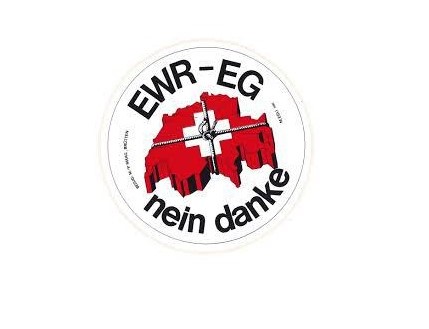By Derk Jan Eppink (Member of the Parliament of the Netherlands (JA21-ECR), formerly an MEP and a journalist)
Not surprisingly, after the collapse of the Soviet Union in 1991, the expansion of NATO would inevitably meet its limit. That limit has now been reached. “Ukraine” literally means “on the edge”; between East and West. Any attempt to make Ukraine a NATO member state would escalate a conflict with Russia. This could happen more quickly than people think, especially if no channels of conversation remain.
The former leader of the Dutch governing VVD party, former EU Commissioner Frits Bolkestein, was the first to understand this. Back in 1997, in a speech at the Lower House, he argued against NATO expansion. By doing so, he risked a cabinet crisis. At the time, this concerned Poland, the Czech Republic and Hungary. Nevertheless, the process continued unabated. Now NATO has 30 members.
Russia and the West exchanging threats
At the moment, we are witnessing an exchanging of threats. Russia placed 100,000 troops on the border with Ukraine. The United States is sending weapons to Ukraine and so are some European countries. The Netherlands sent two F-35 fighter jets to Bulgaria. Patrolling the Black Sea is not without risk, as the Dutch frigate Zr. Ms. Evertsen experienced, when a Russian fighter plane skimmed just over the frigate. Intimidation. One push on the wrong button and there can be an incident similar to a spark in a powder keg.
During the cold war, the two great powers realized the danger. A “hotline” was created, as well as a series of negotiation channels on the limitation of nuclear weapons. There was a platform for dialogue, and often there were poker games. International politics is not determined by morality, but by power. Great powers always want a “comfort zone. In 1961, America demanded the removal of the nuclear weapons from Cuba which the Soviet Union had placed there. The Cuba crisis almost escalated into nuclear war. Moscow retrieved the nuclear weapons, and six months later America dismantled its nuclear weapons in Turkey.
With Ukraine in NATO, the West would be at Moscow’s front door
With Ukraine in NATO, the West would be at Moscow’s front door. And that is in Russia’s comfort zone. The current debate seems to be a repeat of 2008, when NATO wanted to preserve the prospect of membership for Ukraine and Georgia. In that respect, it’s worth to recall that the core value and military essence of NATO is Article 5, which sets out that an “an attack against one ally is considered as an attack against all allies.”
Georgian President Mikhail Saakashvili already ran ahead of membership. Tensions with Moscow were rising, but Saakashvili hoped for NATO support, or at least U.S. support. The Russians entered Georgia and paraded tanks through Gori, the birthplace of Stalin. NATO and the US did nothing. Saakashvili took Article 5 hostage, but he was too early. European countries, including Germany and France, flinched. The NATO offer was off the table.
Then-NATO Secretary General Jaap de Hoop Scheffer acknowledged in 2018 that the offer of NATO membership to Ukraine and Georgia was “a mistake”, adding: “It was not surprising that Putin drew a red line there.” That conclusion still holds true.
Meanwhile, the situation has become more serious, as relations between the United States and Russia are downright bad. Vladimir Putin has become a domestic political enemy in America. The dispute is personal. Democrats cited ‘Russian interference” as the cause of Hillary Clinton’s loss in the 2016 presidential election. President Trump was said to be a “Russian asset”. Putin was the “bad guy”.
“If Ukraine was a NATO member now, NATO would cease to exist”
Meanwhile, Putin has come up with an exaggerated set of demands, requiring NATO to expel nearly 10 members from the club. A country, including Ukraine, may apply for NATO membership, but thirty countries must agree. This is not easy, because Europe is completely divided. Poland, with the Baltic states, is the most militant. Germany the least. Meanwhile, France is looking for a role for itself. American military historian Victor Davis Hanson recently commented: “If Ukraine were a NATO member now, NATO would cease to exist.
Also crucial is the position of Germany, which has a complex and historical relationship with Russia. Despite two major wars, there is mutual respect between the two countries. And great economic interests. Germans have – and this sounds strange – more sympathy for Russia than for America. An economic sanctions package is practically the only thing the EU can decide on. However, if it is too harsh, Moscow can immediately turn off the gas tap to the West. This would cause energy prices to explode and Germany and the Netherlands would be left out in the cold.
The Netherlands relies on international law, Russia on raw power
The Netherlands relies on international law, and considers Russia to be keen to go back to the nineteenth century. However, Russia has never left that nineteenth century and assumes raw, even brute, power.
Russia can easily win any contest on “suffering”. Our citizens are much less accustomed to that, and very understandably, war-weary. After Covid, a cold wave is not a alluring prospect for the Dutch.
In sum, there needs to be a negotiating framework like in the Cold War. One solution could be that Ukraine works more closely with European countries economically, but does not become a member of NATO, and that the U.S. and Russia engage in serious negotiations on conflict management and medium-range missile limitations in Europe.
This is a better path than risking an escalation that would inevitably lead to war.
Originally published in Dutch by Elsevier Magazine.
Disclaimer: www.BrusselsReport.eu will under no circumstance be held legally responsible or liable for the content of any article appearing on the website, as only the author of an article is legally responsible for that, also in accordance with the terms of use.













